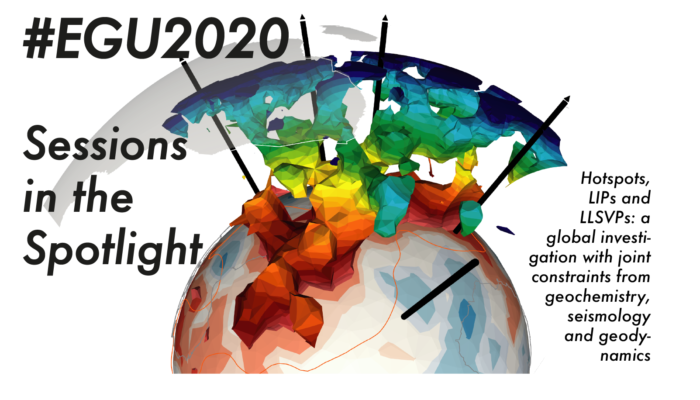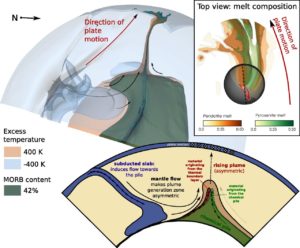
The Earth Sciences are so broad, that sometimes we can end up forgetting the other parts of it exist. We can get so focused on our field that we forget there might be other people working on really similar things, who might have something really useful to say. The EGU conference is great for solving this problem – it’s big enough to bring together all sorts of Earth scientists, but still small enough that you can have a chat without feeling totally overwhelmed.
Today’s featured session is all about bridging the gaps between different scientists working on similar fields, and is sure to lead to wide ranging and interesting discussions. The focus is on mantle plumes, but the session description covers all sorts of mantle structures.
The convenors (Maria Tsekhmistrenko (Oxford), Eva Bredow (Potsdam) and Juliane Dannberg (Florida)) say:
Seismic tomography images large low-velocity provinces (LLVPs) at the core-mantle boundary (CMB), deep mantle plumes, and the connection between them. Geochemistry provides constraints on the age and nature of the material sampled by plumes. Geodynamic modelling suggests interaction of subducting slabs with low-velocity piles at the CMB and traces the geographical source of erupted material. What is needed now is to combine approaches and confront observations from the different fields to build a clear picture of the link between deep structures and surface expressions in volcanoes.
This session aims to bring together scientists from these different fields to better constrain the complex processes in the mantle at all depths with a focus on mantle plumes. We invite contributions from (1) seismic observations and seismic tomography models of mantle plumes and LLSVPs. (2) geodynamic modelling on the origin of LLSVPs and their connection to mantle plumes. (3) tectonic studies with new data (or old data with new flavour). (4) geochemical and petrological studies constraining the nature and evolution of thermochemical plumes. (5) all studies that use novel data collection and visualization techniques to further understand deep mantle structures and their connections to the surface observables.
This is a great opportunity to meet people from all sorts of disciplines – submit your abstract here!
